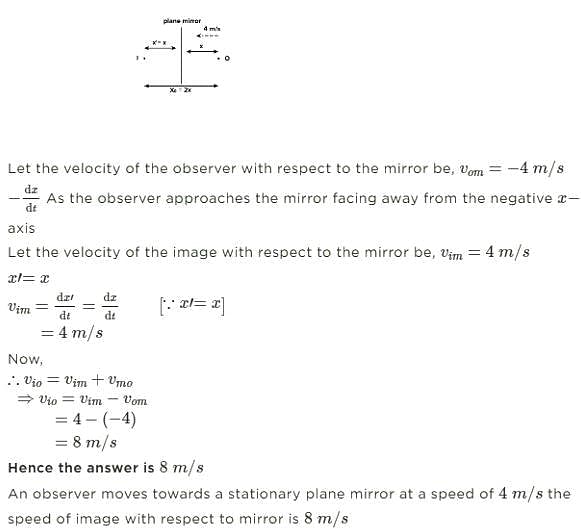Test: Reflection of Light - UPSC MCQ
20 Questions MCQ Test - Test: Reflection of Light
Raj is standing in front of a plane mirror. The distance between Raj and his image is 100cm. If the distance between the mirror and image is x. What could be the possible value of x ?
Which among the following is not true for a plane mirror ?
An observer moves towards a stationary plane mirror at a speed of 4m/s. The speed of image with respect to mirror is __________.
Which of the following letter does not show lateral inversion ?
What will be the angle of reflection if light falls normally on the reflecting surface?
Which of the following letter shows lateral inversion ?
Rahul is standing in front of a plane mirror. The distance between Rahul and his image is 150cm. If Rahul’s distance from the mirror is x. What could be the possible value of x ?
Harry is standing in front of a plane mirror at a distance of 6 m. His image on the other side will form at a distance of















